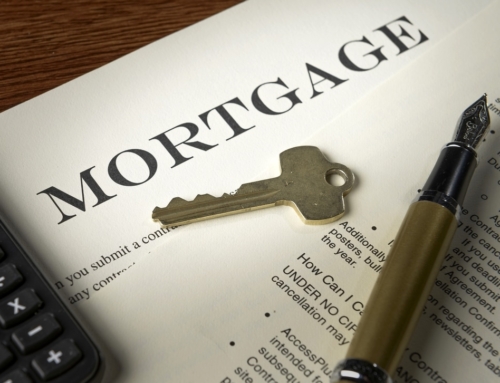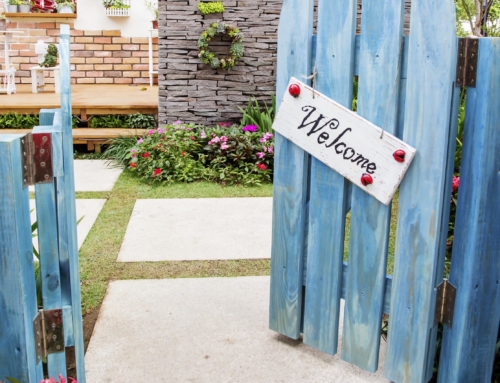Applying for a loan is different from getting prequalified. Getting prequalified before you buy property involves going to a lender and having the lender analyze your assets, liabilities, and income stream. From these items (which the lender may not see but may just take your word on), the lender comes up with a dollar amount you can borrow.
You’ll need to actually apply for your loan when you get preapproved. And that’s when things change. The lender will want to see documentation and proof that you actually have the assets and debts you say you have. You will sit down with the loan officer, who will ask you questions and write down the answers. Or, you will sit down at your computer, log on to a web site and fill out your own application.
Having the following information can speed up the process significantly: Copies of all bank statements for the last three months; copies of all account statements, including stock brokerage accounts; most recent pay stub for you and your spouse or partner; W2 form for the past two years; if you’re self-employed, your last two years of tax returns plus a profit-and-loss statement for the year to date; and, a gift letter, if part of the money you’re using to buy the house has come as a gift from your parents, friends or other relatives.
Once you have your documentation in hand, you’ll have to make some important decisions in order to completely your application:
-
What mortgage program is right? The type of mortgage you choose depends on two factors: How long you plan to stay in the house and how much risk are you willing to take?
If you don’t like a lot of risk, a fixed-rate loan is probably a good choice. If you’re willing to take some risk, you might try a loan that’s fixed for a period of time and then turns into a 1-year adjustable, like a 5/1 or 7/1 adjustable rate mortgage (ARM).
-
Should you float the rate or lock in? When the lender asks you this question, he or she is really asking you if you want to lock in at the current rate, or take a gamble that the rates will drop a bit before you close on the loan. Lenders might offer you the option to take either the rate where it is today (or on the day you lock) with a free float-down option. This is the best of both worlds, because if the rate drops, you’ll have an opportunity to lock it in. But be aware that the float-down option might include the possibility that that the rate will rise slightly, perhaps one-quarter to one-half a point.
-
How long should the lock be? When you apply for a loan, the mortgage rate offered by the lender is only good for a specific amount of time. You have to choose how long you want the rate to last, while remembering that the longer the rate lock, the higher the rate will generally be.
Lenders usually offer to hold the rate for 30, 45, or 60 days. You should base the length of the lock on when you’re supposed to close on the loan. For example, if you apply for a loan twenty-eight days before you want to close, you might choose to hold the rate for thirty days. If you’re going to close in 38 days, you might choose to lock in for 45 days. In any case, lenders are busy, so be sure your lender can close within the timeframe you require.
Lenders will rarely offer to hold a lock for longer than sixty days, but if you need to close quickly, they might manage to approve your mortgage and lock a rate for seven days. The shorter the lock, the more important it is to furnish your lender with everything he or she needs to get your loan going.
The reason lenders don’t like to lock in rates for extended periods of time is that interest rates fluctuate daily and often change several times each day. With that much activity, it’s difficult for lenders and investors to predict how much interest rates will change over the course of two months. To protect themselves, they limit the length of lock-ins. Just remember, the longer you want the lender to hold the lock, the more you’ll pay for that privilege.
If you’re buying new construction, it’s likely that you’re buying off of a blue print, unless you’re buying a developer’s spec house. It could take anywhere from 4 months to 2 years (in the case of some loft or condo conversions) for the property to be finished.
If you’ve got to wait 9 months or longer until closing, don’t try to lock in on a rate now, unless the developer has set up a special deal with a participating lender. You’ll pay way too much to lock in a rate today. You’re far better off waiting until you’re only 60 days out from closing, and then watching interest rise and fall until you decide it’s a good time to lock in the rate.
-
How many points, if any, do you want to pay? Most first-time borrowers don’t realize there is an inverse relationship between the number of points (a point is one percentage point of the loan amount) you pay and the interest rate you receive. So, the more you pay, the lower your rate of interest.
Points are paid in cash (usually tough for first-time buyers to come by) at the closing, but the federal government allows you to deduct them from your income taxes during the year of the closing. Or you can amortize your points (pay them over the life of the loan) which will ultimately increase your rate.
Whichever way you go, never walk away from an application without getting a copy of every document you’ve signed. It is extremely important to be able to document in writing every step in the application process.
If your lender ever gives you trouble, you’ll have to prove what was said and what was signed. Also, signing a document signifies that you’ve actually read it. Take the time to read all documents at the application, and don’t be afraid to ask questions of the loan officer.
March 31, 2003.






Leave A Comment